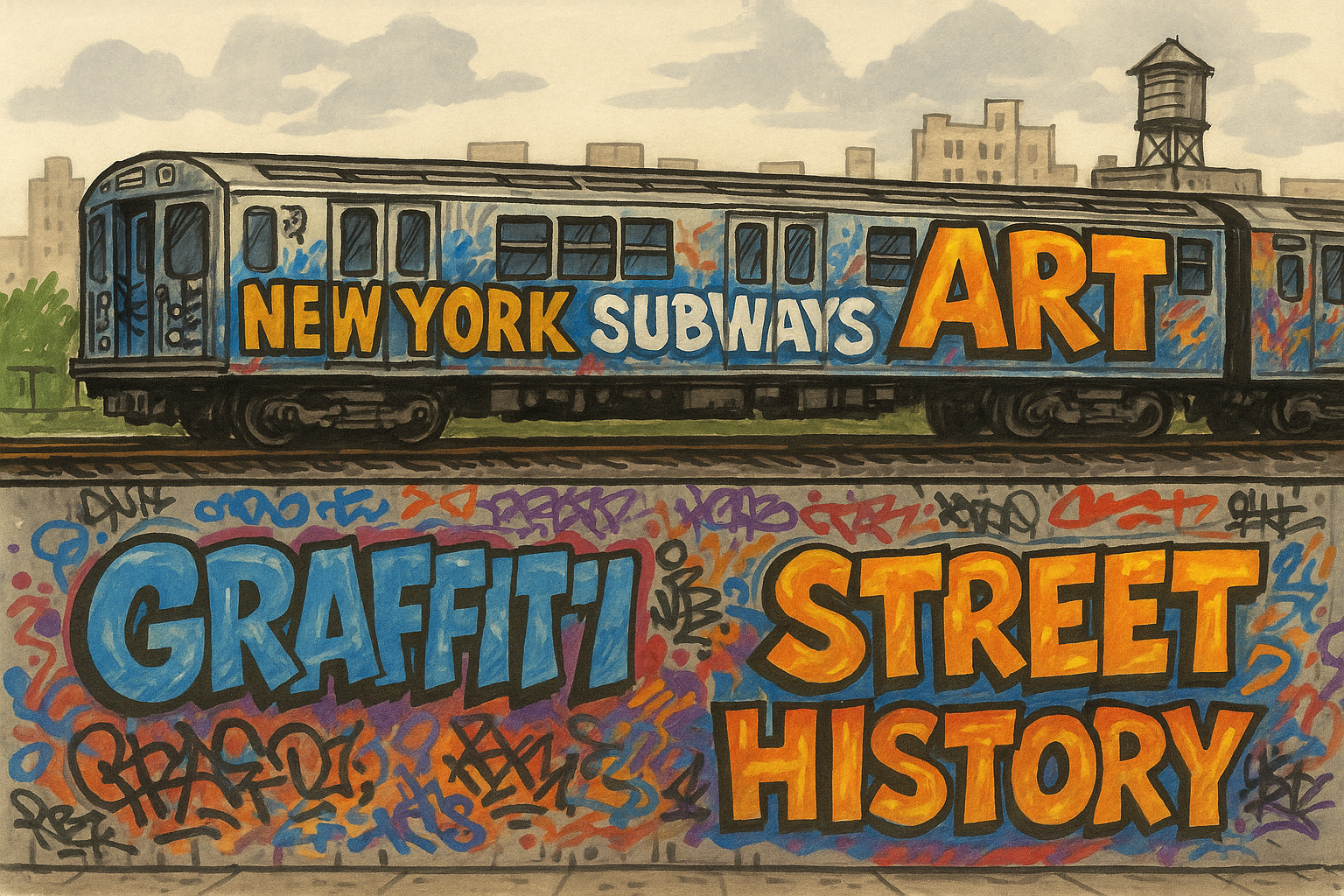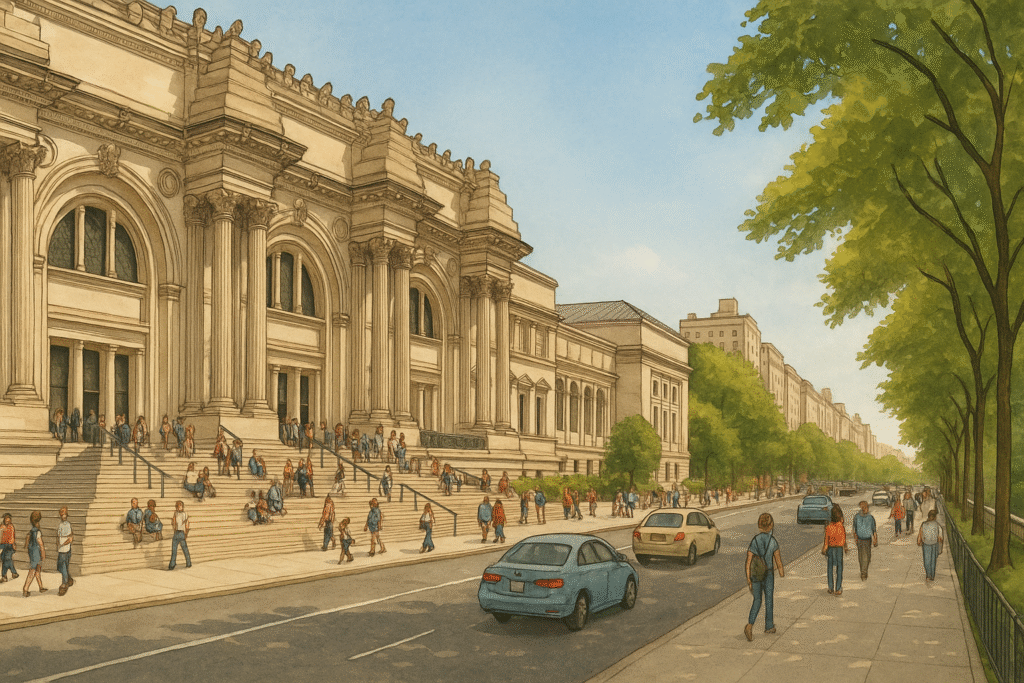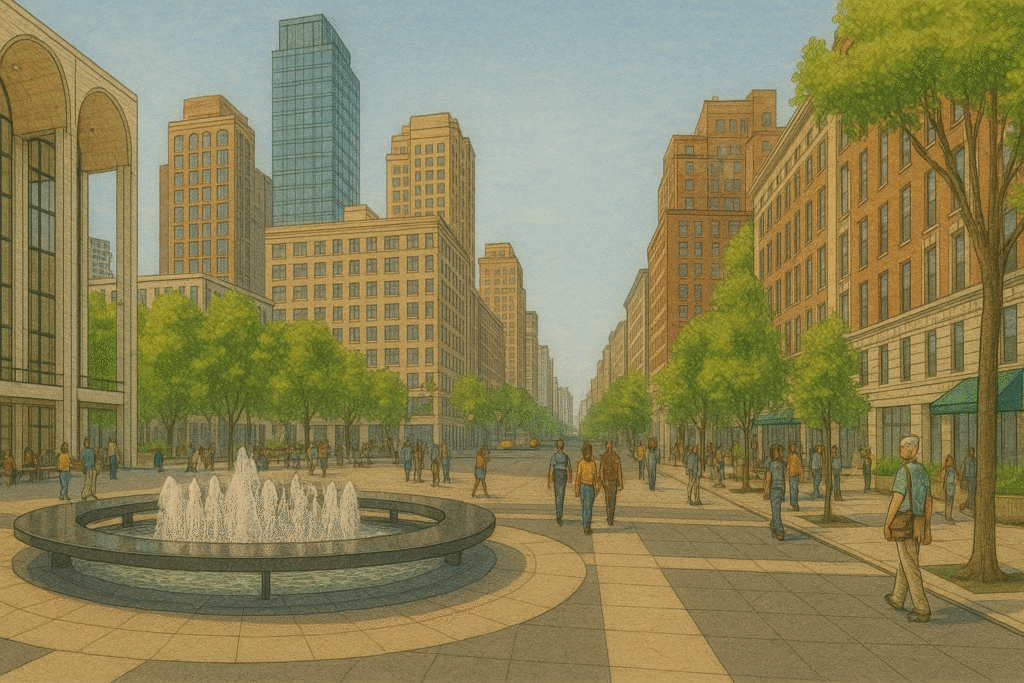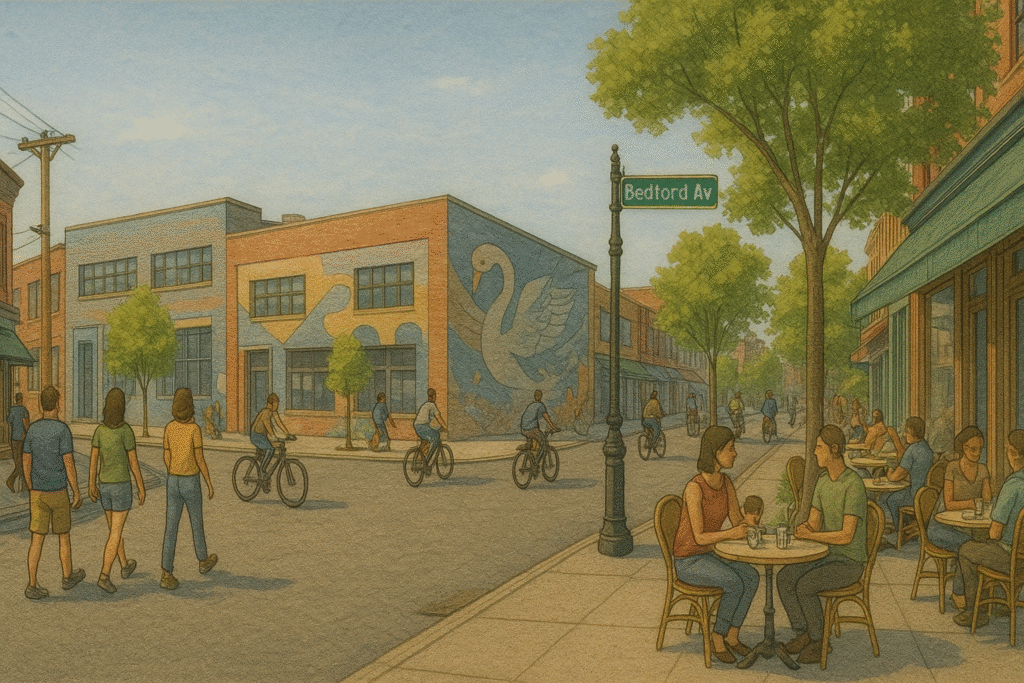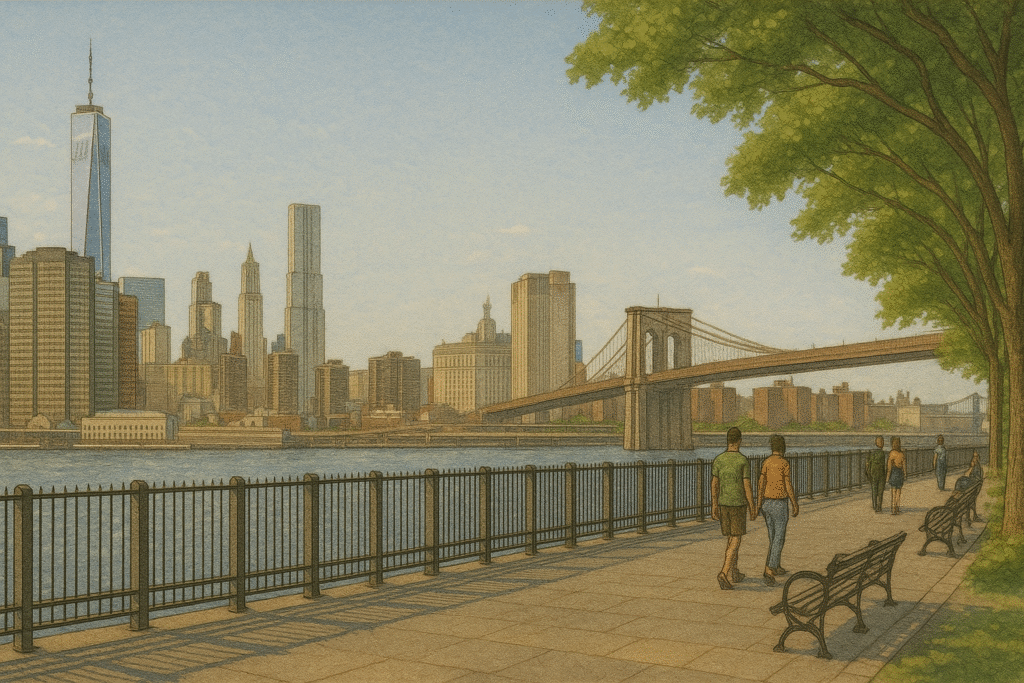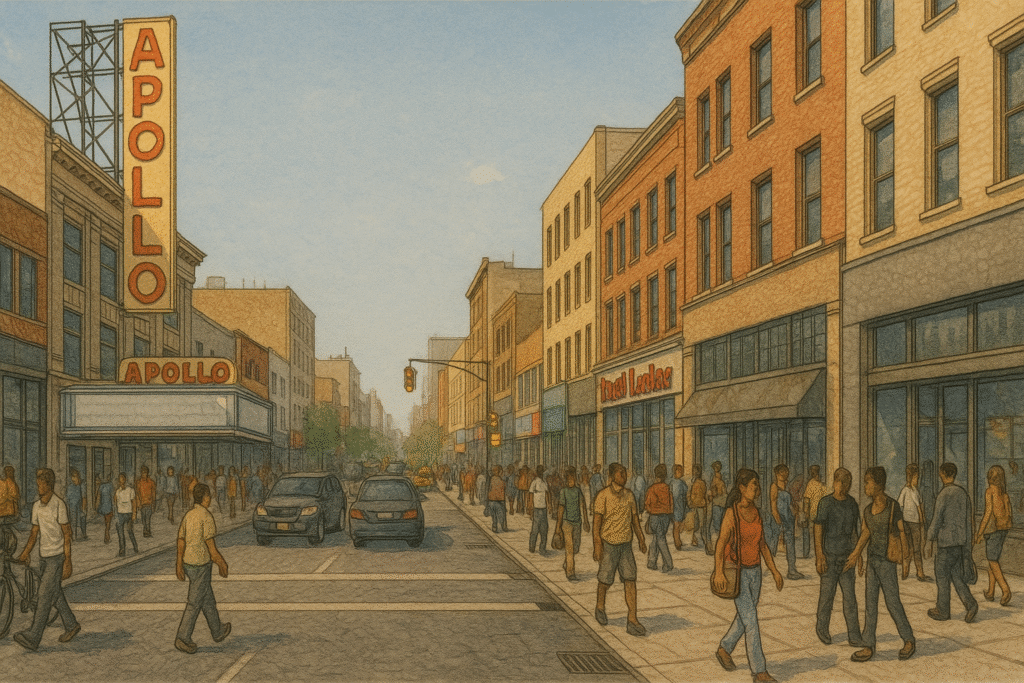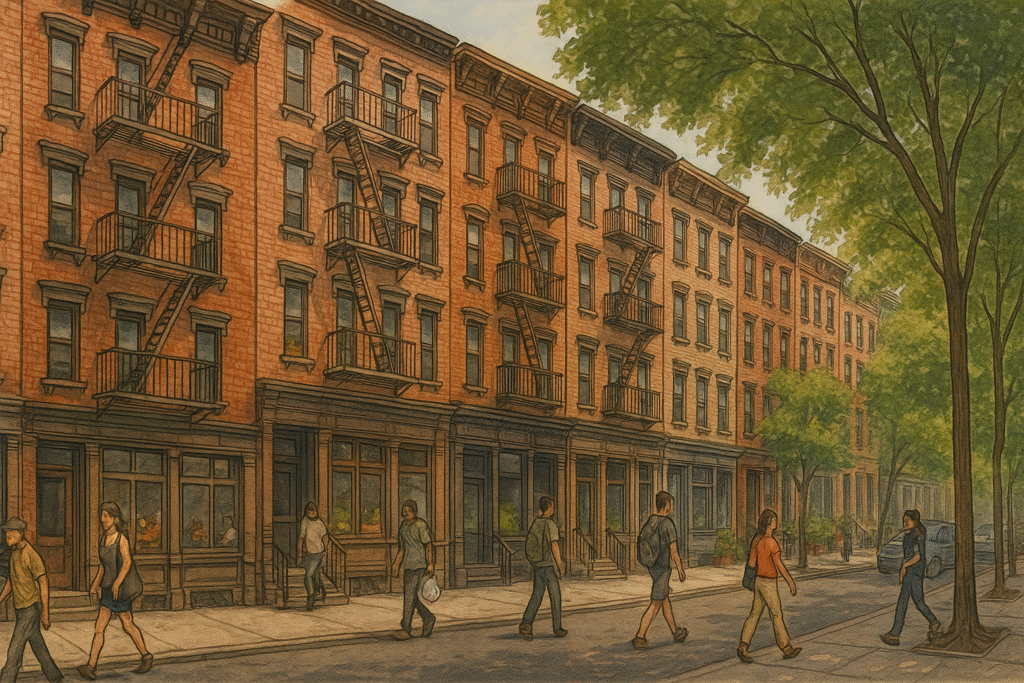At the height of New York’s financial crisis in the late 1970s, a subway train rattled into the South Bronx station. Its silver cars, once sterile symbols of public transit, were now transformed—swallowed by vibrant, jagged lettering, cartoonish faces, and wild explosions of color. To some, it looked like urban decay in full bloom. To others, it was the voice of the streets finally speaking back.
Graffiti in New York City has long sparked debate: is it art, vandalism, rebellion, or cultural currency? In truth, it’s all of these—and more. Born from youth culture in neighborhoods battered by poverty and neglect, graffiti emerged not just as aesthetic expression, but as a political act. Over the decades, NYC’s walls and trains became battlegrounds for identity, space, and visibility—its graffiti style eventually spreading worldwide, shaping everything from fine art to fashion.
This piece traces the evolution of graffiti in New York City, exploring its origins in the underground, its entanglement with policing and politics, and its global legacy as both a tool of resistance and a cultural export. Graffiti is not just what’s written on the wall—it’s a reflection of who’s allowed to write, and what they’re trying to say.
The Birth of NYC Graffiti
The story of modern graffiti in New York begins in the late 1960s, not with grand murals or political slogans, but with a nickname and a marker. TAKI 183, a Greek-American teenager from Washington Heights, began scrawling his name and street number across subway stations and buildings. Others followed, mimicking his format—name plus number, identity plus territory. What started as simple tagging soon evolved into a citywide subculture.
In these early years, graffiti was deeply connected to the social and spatial realities of New York’s boroughs. The city was in the throes of economic collapse. The Bronx was burning—literally, as landlords abandoned properties and fires consumed entire blocks. Public services were gutted. Amid this backdrop, young people—many from Black, Latino, and immigrant communities—reclaimed neglected urban spaces by marking them.
Graffiti quickly became one of the four foundational elements of hip-hop culture, alongside MCing, DJing, and breakdancing. Just as breakdancers took over public parks with cardboard mats, graffiti writers took over subway cars and concrete walls. It was a way to be seen, to declare presence in a system that often rendered entire communities invisible.
Importantly, this was not art in the gallery sense—it was unauthorized, ephemeral, and democratic. Anyone could pick up a can, claim a tag, and compete for visibility. Style became currency: who had the cleanest lines, the most daring spots, the boldest colors? Crews formed, names like EX-VANDALS, TOP, and TC5 earning reputations across the city.
What made NYC graffiti unique at its birth was this perfect storm: a city in decay, youth in revolt, and a transit system that turned every tagged train into a mobile billboard. Graffiti was no longer just writing—it was motion, energy, rebellion, and community.
The Subway Years
By the mid-1970s, the New York City subway system had become the beating heart of graffiti culture. Subway cars, constantly moving through boroughs and neighborhoods, served as mobile canvases for writers trying to gain citywide fame. The goal was not just to tag, but to “get up”—to have one’s name seen as widely and frequently as possible.
The art evolved quickly. What started as single-color tags became intricate, multi-colored “pieces” (short for masterpieces). Writers began experimenting with fonts, shading, and scale, developing styles like bubble letters, wildstyle, and blockbuster. Some of these styles were so complex they became nearly illegible—an intentional move to gatekeep the culture and show technical mastery.
Writers like Dondi, Lee Quiñones, Lady Pink, Futura 2000, and Seen elevated graffiti into an art form. Crews would spend entire nights in train yards painting entire cars—sometimes whole trains—risking arrest, electrocution, or worse. The most daring pieces were called “top-to-bottoms”, covering the full height of the car. Writers even timed their work to major train lines or rush hour schedules, maximizing exposure.
But this golden era wasn’t just about competition—it was about communication. Graffiti was the street’s language. Every piece carried subtexts: turf claims, political statements, memorials for fallen friends, or jokes at rivals’ expense. The subway transformed into a running dialogue among artists and neighborhoods.
The broader public, however, didn’t always see it that way. To many New Yorkers—especially in whiter, wealthier areas—the subway system had become a symbol of chaos, crime, and neglect. Media outlets published alarmist headlines linking graffiti to gang violence and societal breakdown. Politicians, too, framed it as a symptom of urban disorder.
Still, to those on the inside, the subway years were sacred. They were a time of unfettered creativity, of youth culture asserting itself on the city’s most visible surfaces. Even as the crackdown began, graffiti’s mythology had been cemented. The trains—covered in spray paint, rumbling through tunnels—were no longer just transit. They were moving monuments to rebellion.
War on Graffiti
As graffiti exploded in visibility and artistic complexity during the subway years, a growing backlash emerged—led by politicians, police, and parts of the public who viewed it not as creative expression, but as an emblem of New York’s decline. By the early 1980s, the city declared a full-scale “war on graffiti.”
At the heart of this offensive was the belief that graffiti was the gateway crime—a key tenet of the “Broken Windows” theory of policing. Introduced by social scientists James Q. Wilson and George L. Kelling, the theory argued that small signs of disorder (like broken windows or graffiti) created an atmosphere of lawlessness that encouraged more serious crime. NYC officials embraced this logic with fervor.
Mayor Ed Koch was the first to prioritize anti-graffiti policy, launching clean-up campaigns and painting over subway cars. But it was Mayor Rudy Giuliani, a former prosecutor, who institutionalized the crackdown in the 1990s. His administration’s “quality of life” agenda, enforced by Police Commissioner William Bratton, aggressively targeted graffiti writers. Arrests soared. Penalties increased. Graffiti was rebranded as a public menace, tied rhetorically to drug use, gang activity, and blight.
The Metropolitan Transportation Authority (MTA) took extraordinary steps to deter writers: installing razor wire, dogs, and motion sensors in train yards; removing or repainting any tagged car before it could enter service; and even conducting undercover operations. By 1989, the subway system was officially declared “graffiti-free”—a major symbolic victory for the city’s anti-graffiti crusade.
But this “clean-up” came at a cost. Many of those targeted were Black, Latino, and working-class youth, disproportionately subjected to stop-and-frisk tactics and carceral punishment. For critics, the war on graffiti was part of a broader strategy of spatial control and gentrification—a way to police who had the right to occupy and mark public space.
At the same time, a schism emerged in public opinion. While the city was criminalizing graffiti on trains and buildings, high-end galleries in SoHo and Chelsea were beginning to exhibit the very same artists. Writers like Futura, Lee Quiñones, and Lady Pink made the leap from train yards to art fairs, their work now considered legitimate—provided it was on canvas, not concrete.
This contradiction—celebrated in galleries, punished on walls—exposed the uneasy politics of graffiti. What made a tag “vandalism” in one context and “art” in another? Who got to decide? The war on graffiti wasn’t just about aesthetics—it was about power, class, and control over the narrative of the city.
Graffiti as Art
Even as New York City officials criminalized graffiti in the streets, the art world began to recognize its cultural and aesthetic value. By the early 1980s, a new chapter had opened: graffiti was no longer confined to train yards and alleyways—it was entering galleries, museums, and auction houses.
Pioneers like Jean-Michel Basquiat and Keith Haring played central roles in this transition. Though not traditional graffiti “writers” in the subway sense, both came from the downtown street scene, influenced by graffiti’s visual vocabulary and its commitment to public expression. Basquiat, with his enigmatic crowns and cryptic symbols, began as SAMO, tagging poetic phrases across SoHo. Haring filled subway ad spaces with chalk-drawn figures that combined accessibility with political urgency.
Meanwhile, traditional graffiti legends like Futura 2000, Crash, and Daze adapted their styles to canvas and found new audiences in Europe, Japan, and the U.S. elite art circuit. Shows like “New York/New Wave” (1981) at MoMA PS1 and “Graffiti Art Success for America” at Fashion Moda brought street artists into institutional spaces—often to mixed reactions from both critics and graffiti peers.
This transition raised fundamental questions:
- What happens when a movement born from illegality is suddenly sold and commodified?
- Does graffiti lose its edge when it leaves the street?
- Who benefits from the shift—the originators, or the galleries that repackage their work?
Some artists embraced the shift, seeing it as survival or evolution. Others rejected it, viewing galleries as an extension of the systems graffiti was meant to resist. The tension between street credibility and art world legitimacy became a defining feature of graffiti’s trajectory.
Yet the influence of graffiti on contemporary art cannot be denied. Elements of its style—bold color fields, aggressive typography, layering, repetition—became central to postmodern aesthetics. Designers and brands followed suit: streetwear giants like Supreme, Stüssy, and later Off-White borrowed heavily from graffiti’s energy. Even corporations began using faux graffiti in advertising, commodifying a once-criminalized form of expression.
In a twist of irony, what had once been punished as defacement became one of the most marketable aesthetics in global culture. And while some artists found financial success and cultural validation, others were left behind—still arrested for writing on walls while their style hung in high-end galleries just a few blocks away.
Graffiti’s evolution into “art” did not resolve the tensions at its core. Instead, it amplified them. The questions of authorship, access, authenticity, and appropriation became louder—and more urgent.
Modern NYC Scene
Today’s graffiti landscape in New York City is a study in contrasts—legal and illegal, celebrated and criminalized, grassroots and commercialized. While the subway system remains largely graffiti-free, the city’s walls, rooftops, alleyways, and scaffolding continue to carry the voices of writers from every generation. The battle for space persists, but the terrain has shifted.
One of the most visible transformations is the rise of legal walls and curated street art. Organizations like the Bushwick Collective have turned neighborhoods in Brooklyn into open-air galleries, inviting artists from around the world to paint massive, sanctioned murals. The effect is striking: color-splashed walls line blocks once marked by industrial blight. Tourists arrive in droves. Street art tours and Instagram influencers follow.
Other neighborhoods, like Wynwood in Miami, Downtown LA, or Shoreditch in London, reflect similar trajectories: once-forgotten areas revitalized through street art, then transformed by rising rents and real estate speculation. In Bushwick, a mural by an international artist may sit directly across from an unsanctioned throw-up from a local crew—a visual and cultural tension between art and authenticity, between economic uplift and displacement.
In this era, gentrification is graffiti’s double-edged sword. Developers now commission murals to enhance “urban edge” and boost property values, the very same spaces where graffiti writers were once arrested. Aesthetic once associated with rebellion is now branded as “cool.” In many cases, graffiti has gone from subversion to surface design.
Yet even as parts of graffiti are sanitized and commodified, the illicit scene remains vibrant. Writers still climb fences, scale fire escapes, and bomb rooftops—pushing back against the sanitization of street culture. A new generation, often fueled by social media clout and global networked crews, mixes old-school methods with digital-age strategies. Some write for fame, some for legacy, others for political provocation.
Graffiti also finds new outlets through community initiatives, including youth programs that teach spray techniques as art and mentorship rather than crime. Mural collectives work with local residents to create public pieces that honor neighborhood history or address social issues. These projects blur the lines between activism, beautification, and cultural preservation.
What defines modern NYC graffiti is not a single aesthetic or ideology, but its multiplicity—coexisting modes of expression that clash and overlap: tags on luxury condos, murals about housing justice, wildstyle burners behind art galleries, protest graffiti during marches, and stylized signatures that vanish under a coat of buff paint by morning.
In this ever-shifting cityscape, graffiti continues to pose the same urgent questions it always has: Who controls the streets? Who gets to be seen? What stories are allowed to stick?
Global Graffiti Culture
Though New York City was the crucible of modern graffiti, its influence has long since gone global. Graffiti today is a transnational language—shaped by local politics, social struggles, and artistic traditions, yet still tied to the aesthetic and ethos forged in the subways and streets of NYC.
Europe: Paris and Berlin
In Paris, graffiti took hold in the 1980s, deeply influenced by imported hip-hop culture and New York’s visual style. French artists brought their own twist: Blek le Rat pioneered stencil graffiti, a cleaner, faster alternative to freehand spray paint, laying the groundwork for figures like Banksy. In Parisian suburbs, graffiti often reflects tensions around identity, class, and urban marginalization.
Berlin, especially after reunification, became a magnet for artists seeking freedom and space. The Berlin Wall itself transformed from a symbol of division into an iconic graffiti canvas. With entire neighborhoods like Kreuzberg and Friedrichshain acting as graffiti-saturated zones, the city gained a reputation for tolerance—and even celebration—of street art.
South America: São Paulo
In São Paulo, graffiti is more than decoration; it’s integral to the city’s visual rhythm. Artists like Os Gêmeos developed a colorful, surreal, and highly recognizable style that gained international acclaim. Another distinct form is pixação—a dense, cryptic style of vertical writing painted on high-rise buildings. It signals defiance and presence in a city marked by social inequality.
Los Angeles and the U.S. West Coast
In Los Angeles, graffiti evolved alongside Chicano muralism, gang culture, and the West Coast’s expansive urban landscape. With its endless walls, river channels, and freeways, LA’s style diverged from New York’s dense lettering and wildstyle. Artists like Chaz Bojórquez, Saber, and Retna helped shape a uniquely West Coast aesthetic, blending tradition, calligraphy, and street edge.
Digital Era and Global Networks
The internet and social media have transformed graffiti’s reach. What was once local and ephemeral is now instantly global. Platforms like Instagram, YouTube, and Flickr have created networked graffiti communities where writers across continents can share styles, collaborate remotely, and document otherwise transient work.
This global exchange has led to both stylistic convergence and innovation. A burner in Tokyo might echo techniques from the Bronx, while a piece in Melbourne riffs on a Berlin wall. Despite these connections, graffiti still reflects the local realities of the cities it inhabits: their architecture, subcultures, and access—or restriction—to public space.
Graffiti has become a planetary dialect, rooted in rebellion, shaped by its surroundings, and fluent in both aesthetics and defiance.
The Politics of Public Space
At its core, graffiti is about space—who occupies it, who controls it, and who gets to be seen within it. Whether sprayed on a subway car, scrawled across a shuttered storefront, or stretched along a construction fence, graffiti interrupts the official landscape of the city. It does not ask for permission. And in refusing to do so, it raises deeper, often uncomfortable questions about visibility and voice in urban environments.
Public space is rarely as open or neutral as it seems. Graffiti forces us to consider who truly owns it, whose messages are permitted, and what kinds of visual presence are valued enough to be preserved versus which are swiftly erased. In most cities, the boundaries of acceptable expression are policed not just by law, but by aesthetic norms, property rights, and economic priorities. Corporate ads, political campaign posters, and real estate banners are allowed to dominate the visual field with little resistance. But when a teenager tags their name on a mailbox or a crew paints a burner on a factory wall, it’s often treated as a threat to order.
For many graffiti writers—particularly those from communities historically excluded from power—the act of writing on walls is a form of self-assertion. It’s a way to claim space in a city that may otherwise ignore or displace them. In this way, graffiti becomes not just an art form but a statement of existence: I was here. You will see me. But this visibility comes at a cost. Anti-graffiti laws, zero-tolerance policies, and broken-windows policing have often criminalized the same communities whose voices are least represented in official city planning or public art commissions.
The contradictions become even starker in gentrifying neighborhoods. In places like Bushwick or the Lower East Side, street art has become a selling point—part of the cultural packaging used to market buildings, attract tourism, and drive up property values. Murals are commissioned to beautify, to brand, to entertain. Meanwhile, unsanctioned graffiti—often by the very writers who made the area culturally rich in the first place—is buffed or prosecuted. The same aesthetic that was once reviled becomes profitable once it’s controlled.
This cycle of erasure and appropriation raises ongoing tensions between graffiti’s roots in disobedience and its current popularity as design. Even legal walls and public art programs, while offering opportunities for expression, cannot fully resolve the fundamental question graffiti keeps asking, over and over again—written large across bricks, concrete, and steel: who gets to write the city?
Graffiti has never been just about spray paint on walls. In New York City and beyond, it is a conversation—sometimes loud, sometimes coded—between individuals and the built environment, between the margins and the center, between presence and erasure. Born in neglected neighborhoods and sharpened on the steel of subway cars, graffiti emerged as both rebellion and self-definition, a language for those rarely spoken for in public space.
Over time, the form has evolved and multiplied. It has been criminalized and canonized, buffed and celebrated, dismissed as vandalism and displayed in museums. It has traveled across oceans, adapted to new cities, and absorbed local dialects, all while maintaining a core defiance—graffiti still insists on being seen.
In New York today, graffiti lives in a strange coexistence. It’s found on luxury buildings and prison walls, in curated mural districts and in illegal tags that vanish overnight. It’s both part of the city’s branding and a tool to resist the forces behind that branding. This tension is not a flaw—it’s what makes graffiti persist. It is, and always has been, about the right to make a mark.
As long as there are walls, there will be people who write on them—not because they’re allowed to, but because they have something to say. And that, ultimately, is graffiti’s enduring power: it reclaims space, disrupts silence, and reminds us that cities are not just designed from above—they are also written from below.
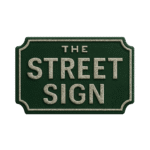
The Street Sign
The Street Sign points the way to where things are — the parks, restaurants, museums, and everything else. These guides are built to save you time and energy. Need a plan for an NYC outing? Follow The Street Sign.
